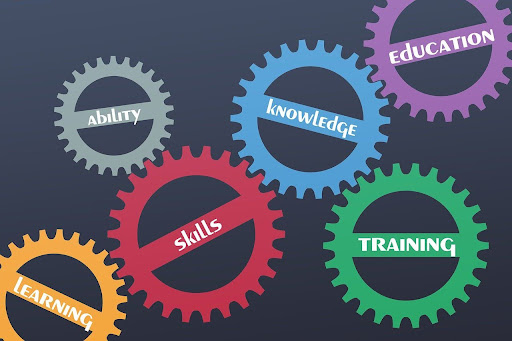In today’s rapidly evolving corporate landscape, “skills assessment” has become more than just a buzzword. The goal is to understand the nuanced abilities employees need to succeed in their roles and how organizations can effectively assess and develop these skills. Recently, we had an insightful conversation with Casey Cornelius from CredSpark on the intricacies of skills assessment, its challenges, and practical strategies for implementation. Here are the key takeaways and how learning and development (L&D) professionals can apply these insights to create impactful skills-based assessments.
Understanding Skills in Professional Development
Skills aren’t just about what people know; they’re about what people can do. This shift from knowledge to application requires a different approach to assessment. In traditional models, emphasis was often placed on the information held in one’s mind—think of the multiple-choice exams many of us are familiar with. These assessments tested recall and sometimes basic application but rarely delved deeper.
In contrast, skills-based assessments explore how well employees can apply their knowledge in real-world scenarios. For instance, in customer service, awareness of company policies is one thing, but effectively communicating with customers, understanding their needs, and providing accurate solutions requires another level of understanding to effectively apply those policies in the real world. Breaking down roles into component skills helps identify areas for development, ensuring employees are ready to perform their duties effectively.
Moving Beyond Traditional Assessments
Although they have their purpose and place, the limitations of multiple-choice tests are evident—they primarily measure recognition rather than the ability to generate responses independently. To truly assess skills, organizations need to employ more sophisticated methods. Scenario-based assessments are a prime example, where employees engage in realistic simulations that mirror their actual work environment. This method allows for a more accurate evaluation of their abilities, providing a clearer picture of their readiness and identifying specific areas for improvement.
Practical Tips for Implementing Skills-Based Assessments:
- Start with Real-World Scenarios: Develop assessments that mimic the actual challenges employees face. For example, if assessing a customer support agent’s skills, create a simulation where they must handle a difficult customer interaction from start to finish.
- Use Technology Wisely: Leverage AI to help scale assessments. These technologies—with human review—can help to create impactful assessments in a fraction of the time. As they become more sophisticated, the potential for AI for skills assessment will only increase.
- Incorporate Peer Review: Encourage peer assessments where employees review each other’s work against a clear rubric. This not only promotes a collaborative learning environment but also helps in scaling the feedback process.
The Importance of Personalized Feedback
Personalized feedback is crucial in skills development. It ensures that learners understand not just what they got wrong, but why. This approach allows for deeper reflection and promotes a growth mindset. To deliver personalized feedback at scale, consider using technology such as AI-driven sentiment analysis or branching logic that tailors feedback based on the learner’s responses.
Strategies for Effective Feedback:
- Use Personalized, Human Feedback: Leverage technology to offer personalized feedback and guidance at scale, while developing a deep understanding of employee skill levels, gaps, and motivation.
- Implement Branching Scenarios: Design assessments that adapt based on the learner’s performance. If someone is struggling, they might receive more foundational questions, while those excelling can move on to more complex tasks.
- Encourage Self-Assessment: Ask learners to evaluate their own performance and confidence levels. This metacognitive approach can provide valuable insights into their self-awareness and readiness for further development.
Overcoming Common Obstacles in Skills Assessment
Defining what skills—and levels of competency—are necessary can be one of the biggest challenges organizations face. It’s essential to involve the employees who perform these roles to ensure the assessments are grounded in reality.
Another common challenge is determining ownership of the skills strategy. Is it the responsibility of L&D, recruitment, or another team? Successful organizations take an organization-wide approach, breaking down silos and fostering collaboration across departments.
Tips for Addressing Skills Assessment Challenges:
- Collaborate Across Departments: Involve various stakeholders from the outset. This ensures that the skills being assessed are relevant and comprehensive.
- Adopt a Continuous Improvement Mindset: Skills assessments should be dynamic. Regularly revisit and refine them based on feedback from both employees and assessors to keep them relevant and effective.
- Encourage an Open Dialogue: Keep the lines of communication open with employees about the skills they need and the competencies expected of them. This transparency helps align their development goals with organizational needs.
Conclusion
Skills-based assessment is more than just the latest trend in L&D; it’s a critical component of preparing employees for success in an increasingly complex and continuously evolving work environment. By moving beyond traditional assessment models and embracing more sophisticated, real-world methods, organizations can better understand their workforce’s abilities, drive more targeted development efforts, and ultimately achieve greater business outcomes. Start by building a collaborative skills strategy, leverage technology for scalability, and prioritize personalized feedback to meet each learner where they are. With these strategies, your organization will be well-equipped to navigate the future of skills development.


